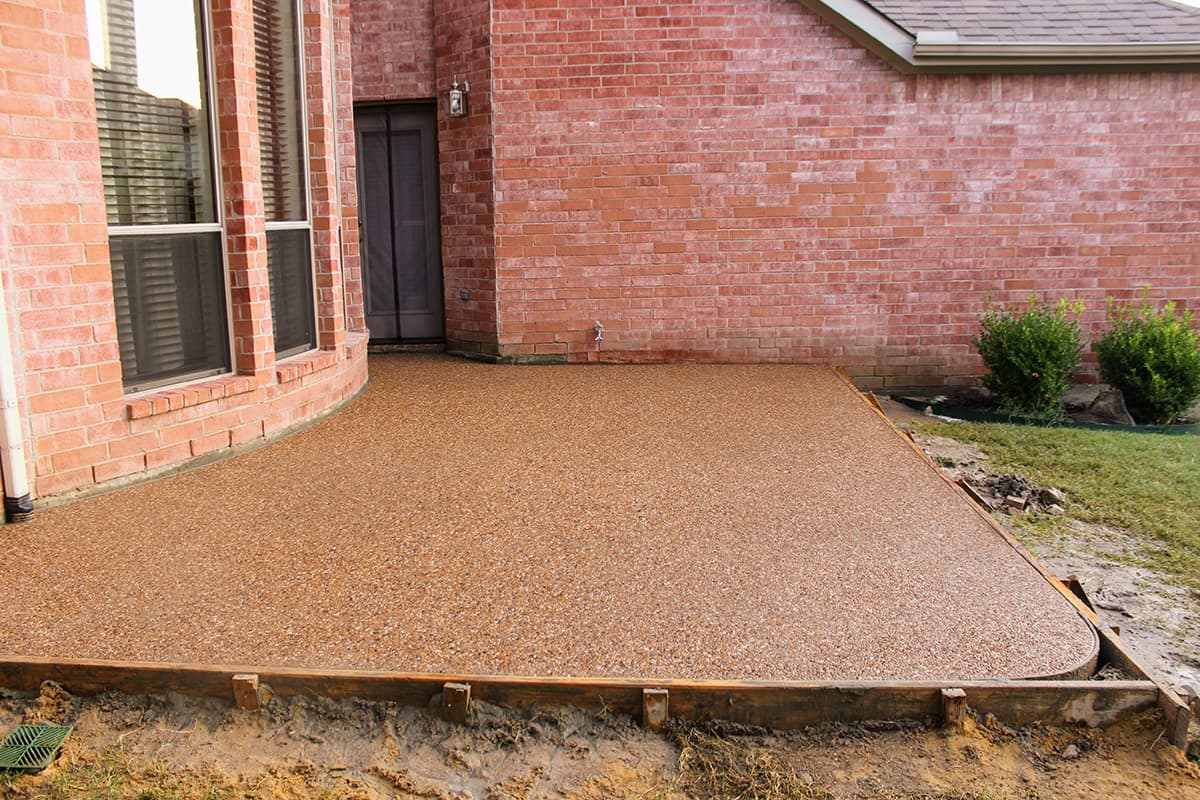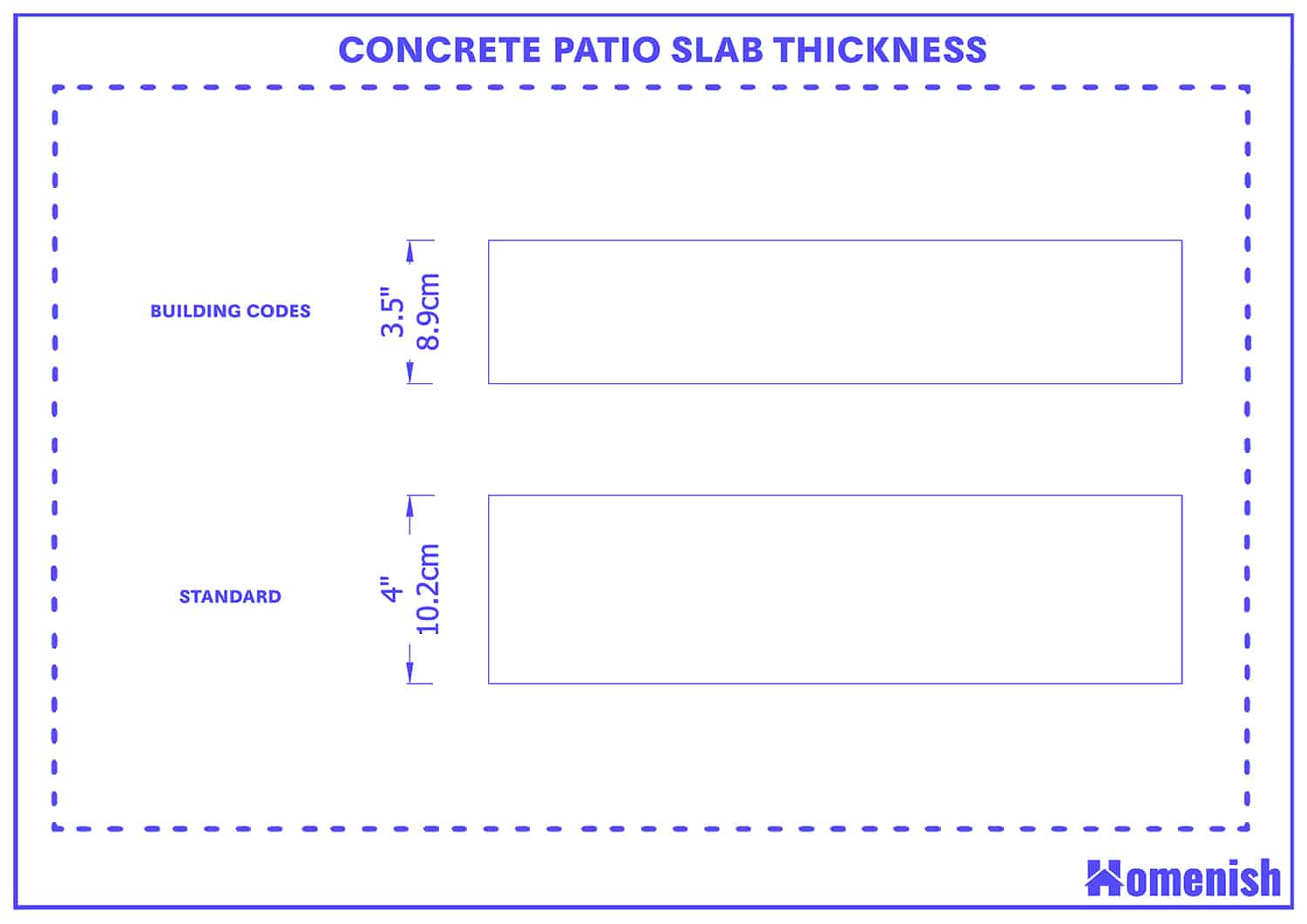Building a patio area in your backyard can make the space more usable, as well as more aesthetically appealing. You may want a new patio area to create an outdoor dining space, or maybe a patio area is needed where you can grow potted plants.
Whatever your reasons are for desiring a new patio in your garden, you’ll need to make several decisions before your project can begin. One of the most important considerations is the size since this is going to impact the way you use the patio, how it looks, and how strong and durable it is.
Here we look at standard patio slab sizes and other factors that will affect the type of patio you decide to build.
Concrete Patio Slabs Vs. Flagstone Patio Slabs
There are two main ways you can create a patio area. These are to pour a concrete slab that will form the floor of your patio or to lay individual flagstone slabs in cement or sand to create a floor for the patio.
Both of these types of patios are very popular, and one is not necessarily better than the other, but it is more a matter of preference.
A concrete patio slab will look more modern and so is better suited to contemporary-style homes, whereas a flagstone slab patio has a more traditional look that works well with historic and older properties.
If you are installing the patio yourself rather than hiring a landscaper, the choice between concrete slab and flagstone slab could well come down to your own abilities.
A concrete slab is considered by most people to be the easier of the two to build since it simply involves pouring mixed concrete onto the ground after you have prepared and measured out the space.
A flagstone slab patio will usually take longer to build, and you need to be more meticulous; otherwise, you can end up with a patio that is not level.
When laying a flagstone patio, it is vital that the ground is leveled first, and then sand is layered and leveled onto the ground before each flagstone can be fitted into place. A spirit level will need to be used on each slab to ensure it is flat and level with the last, and this can be quite time-consuming.
Concrete Patio Slab Sizes
If you decide to build a concrete slab patio, then one of your main considerations should be size. In terms of strength, the most important size consideration for a patio slab is the depth or thickness.
Building codes require that concrete patio slabs be at least 3 and a half inches, but the standard depth of a concrete patio slab is 4 inches. This ensures that the patio is strong enough that it won’t crumble but not so thick that it will use unnecessary concrete and increase the cost of the project.
In terms of the width and length of the patio, this is going to be determined by how you plan to use your patio when it is finished, along with the size of your yard.
Typically, in a traditional garden layout, the patio should occupy between a quarter and a third of the total space in the backyard; however, this is a completely personal decision depending upon how you use your outdoor space.
Some people who like a low-maintenance yard will completely patio their entire garden, while others prefer a compact patio in order to have a bigger lawn.
Patio Slab Reinforcements
Another thing you may be wondering about if you are building a patio slab is whether or not the patio should be reinforced.
When building concrete furniture or creating a concrete slab for house foundations, the slab will always be reinforced with rebar or metal mesh, or both. However, these additions will increase the cost of your patio, so it’s important to understand whether they are necessary to your project.
Most landscapers and builders agree that reinforcements are not needed on a concrete patio slab as long as the ground below it is strong and solid. The slab will be supported by the ground, so it will not need reinforcements if the ground is considered to be stable.
The exception to this is if you plan to put extremely heavy items onto your concrete, such as a large hot tub or an outdoor kitchen. In these instances, reinforcements can be helpful to create a stronger and more solid base for your patio, but they are by no means essential.
Some builders will choose to add in mesh as a precaution for patio slabs, but they are very unlikely to crack or crumble even under heavy weight and with no reinforcements. If you are building the patio yourself, save your money and effort, and pass on the concrete reinforcements.
Preparing for a Patio Slab
Pouring a concrete patio slab is fairly straightforward, but the preparation makes all the difference. To prepare for a patio slab, you’ll need to mark out the area you want to be a patio and excavate this to a depth of around 7 or 8 inches.
Once complete, fill the hole with 3 to 4 inches of crushed stones, sand, and gravel, and compress it to form a fairly level, strong base. This is essential to provide the concrete with good drainage that will extend its lifespan.
Next up, create your frame using timber, and screw it all into place.
Finally, you will be able to pour your concrete to a depth of 4 inches and use scrapers and tools to level it. Although concrete cures slowly, you will need to make sure it is level within the first hour of pouring because it can be difficult to alter after this time.
Once the concrete is almost dry, you can edge it or create a surface pattern, or just wait for it to completely dry if you prefer a flat surface. After 3 days, remove the timber frame and admire your new slab patio.








